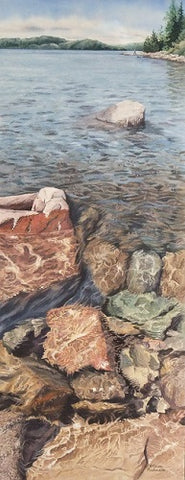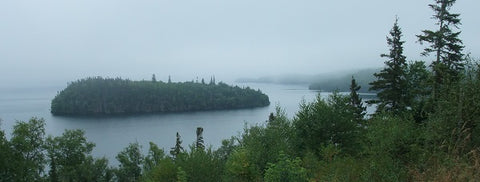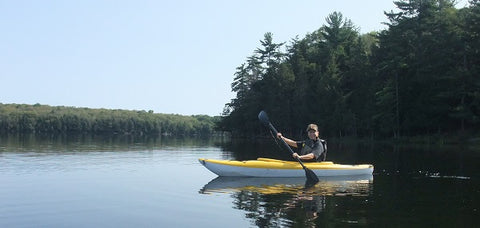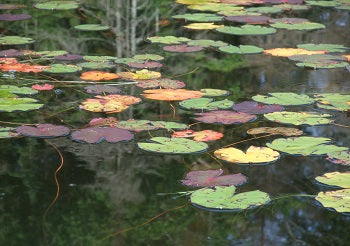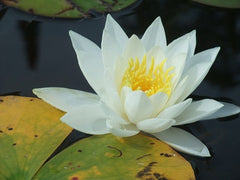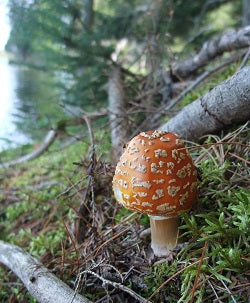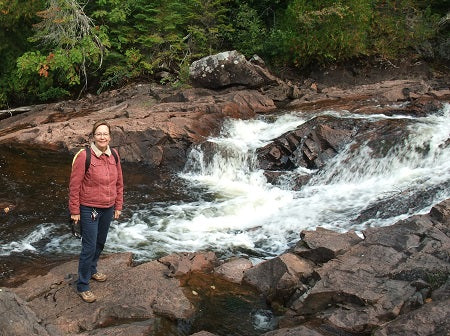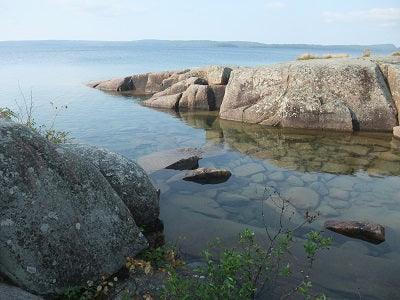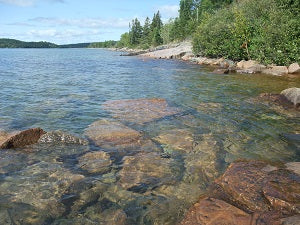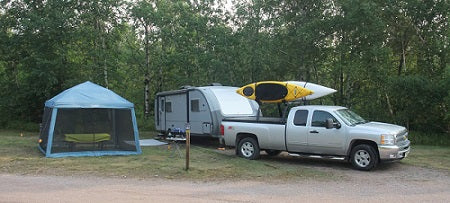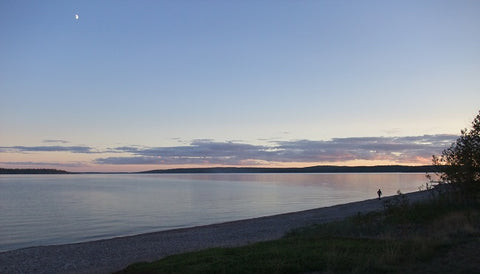Last summer, I was thrilled to spend some time camping along the north shore of Lake Superior, not far from the rocky point shown above (you can read about my trip at Exploring Lake Superior - At Last).
I came home with an extensive collection of reference photos to inspire new paintings. The combination of a world-class variety of colourful rocks and stones and extremely clear water makes for awesome painting subjects. I have completed several excellent pieces, and described some of my painting processes in these articles The Superior Paintings Begin and The Making of 'Listen to the Lake'.
The scene above is in Rainbow Falls Provincial Park (Rossport) and was the subject of a three day advanced workshop I taught in my Lindsay studio. Shown below are the steps involved in capturing this scene in a watercolour painting. There is also a short video of part of the early painting process.

After drawing the scene in pencil on 300 lb cold press watercolour paper (above), I used masking fluid to mask out the twigs and leaves of the shrubbery and the three small rocks sticking out of the water. This temporary protective coating preserved the white paper for a later painting stage. Then I painted a layer of warm gray in the reflection of the far point.
I mixed blue and gray washes (below), using test strips of watercolour paper to verify the colours were accurate to my reference photo. All the colours in this painting were mixed from primary colours blue, red, and yellow.

After I wet the paper where the highlight would be off the end of the point (below), I started painting with the blue mixture for the upper portion of the lake water, gradually blending in the gray mixture as I worked into the lower portion of the lake water.

One of my students took a video of me painting just this section above, while I explained what I was doing, and why. Anyone interested in the details of this process will want to click on the image below to view the 10-minute video.
In the photo below, I have painted the gray shadow layer on the large rock outcroppings. I like to paint my shadows first, while I can see my pencil lines clearly.

Shown below, after the shadow layer dried, I re-wet the rocks with clear water, added quick strokes of tan and grey, then sprinkled salt on top. Each grain of salt absorbed a bit of paint, leaving a pale splotch in the colour. When fully dry, the salt was brushed off. I also painted the first layer of the distant shore hills and pencilled in the outlines of the underwater stones.

In the photo below, I masked out the shapes of lichens in the foreground rock, and deepened the grey shadows with more paint. In the background rock, I used dry brush 'scumbling' to suggest rock colours and textures. The shadow layer was added to the distant shoreline.

In the photo below, I have removed the masking from the foreground rock, revealing the lichen shapes. Using negative painting techniques, I painted outside of each underwater rock shape. When fully dry, I removed the masking from the shrubbery and stones, revealing the white paper.

The final step was to paint the leaves, twigs, and three stones above the water level. The mounted and framed painting, Crystal Clear, is shown below. For more details about this finished work, click here.

What does this scene say to you? If you have comments you wish to share, please do so using the 'Leave a Comment' button at the top of this post.
Subscribe to Karen's Newsletter for exclusive early access to new work, studio news updates, travel tales, painting tips, and notices of upcoming exhibitions.



